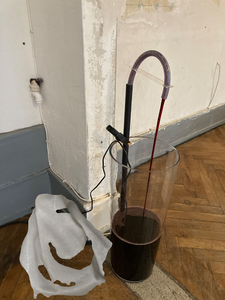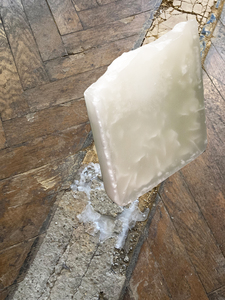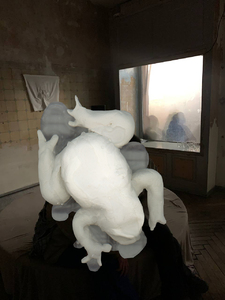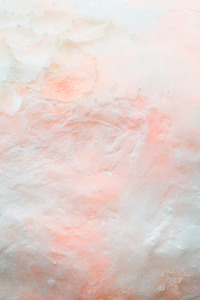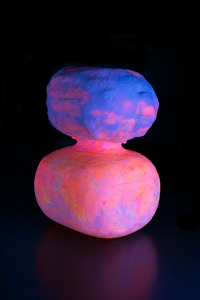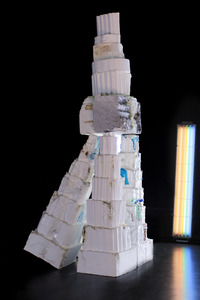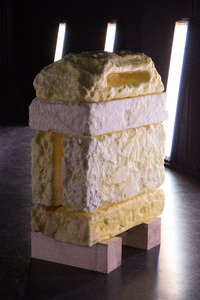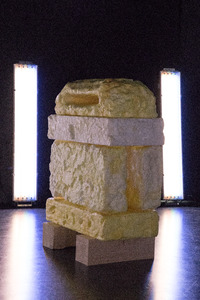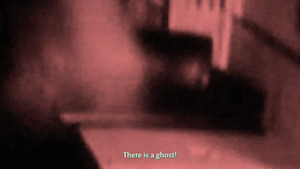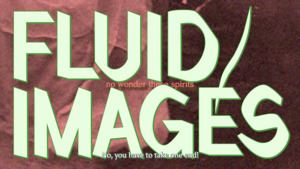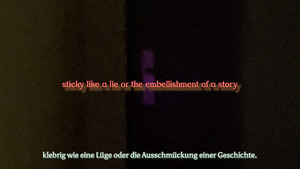Rebecca Stephany
| Name | Rebecca Stephany |
108 Inhalte
- Seite 1 von 9
wine fountain (dt.: weinbrunnen)
- Titel
- wine fountain (dt.: weinbrunnen)
- Schlagworte
- Titel
- wine fountain (dt.: weinbrunnen)
- Titel (en)
- wine fountain
- Urheberrechtshinweis
- © Hanna Franke
- Rechtsschutz/Lizenz
- Freigabe Nutzung HfG
- Beziehung/Funktion
- Projektleiter/in
- Semester
- Studiengang
- Typ der Abschlussarbeit
- Importiert am
- 02.11.2024
- Übergeordnete Sets
- 1
wine fountain (dt.: weinbrunnen)
- Titel
- wine fountain (dt.: weinbrunnen)
- Schlagworte
- Titel
- wine fountain (dt.: weinbrunnen)
- Titel (en)
- wine fountain
- Urheberrechtshinweis
- © Hanna Franke
- Rechtsschutz/Lizenz
- Freigabe Nutzung HfG
- Medienersteller/in
- Beziehung/Funktion
- Alternativ-Text (de)
- Nahaufnahme eines Weinbrunnens, an dem zwei Gläser mit Rotwein gefüllt werden. Im Hintergrund sind Stufen und eine Soundbox zu sehen.
- Alternativ-Text (en)
- Close-up of a wine fountain where two glasses are being filled with red wine. Steps and a sound box can be seen in the background.
- Projektleiter/in
- Semester
- Studiengang
- Typ der Abschlussarbeit
- Importiert am
- 31.10.2024
- Übergeordnete Sets
- 1
wax and stones (dt.: wachs und steine)
- Titel
- wax and stones (dt.: wachs und steine)
- Titel (en)
- wax and stones
- Urheberrechtshinweis
- © Hanna Franke
- Rechtsschutz/Lizenz
- Freigabe Nutzung HfG
- Beziehung/Funktion
- Alternativ-Text (de)
- Großer freigestellter, heller Wachsblock. Im Hintergrund ist ein Holzboden zu sehen. Mittig verläuft eine Schwelle, teilweise aus Stein und Ton. Der Zwischenraum ist mit Wachs gefüllt.
- Alternativ-Text (en)
- Isolated object: a big block of wax. The background shows a wooden floor. In the middle is a threshold, partly made of stone and clay. The space in between is filled with wax.
- Projektleiter/in
- Semester
- Studiengang
- Typ der Abschlussarbeit
- Importiert am
- 02.11.2024
- Übergeordnete Sets
- 1
toad (dt.: kröte)
- Titel
- toad (dt.: kröte)
- Titel
- toad (dt.: kröte)
- Titel (en)
- toad
- Urheberrechtshinweis
- © Hanna Franke
- Rechtsschutz/Lizenz
- Freigabe Nutzung HfG
- Beziehung/Funktion
- Alternativ-Text (de)
- Freigestelltes Objekt: Helle Kröte aus Keramik, die mit einer Schicht Wachs überzogen ist. Im Hintergrund ein dunkler Raum. Ein Stoff hängt an der Wand, Personen sind hinter einer Fensterscheibe zu erkennen.
- Alternativ-Text (en)
- Isolated object: Light-colored ceramic toad covered with a layer of wax. A dark room in the background. A fabric hangs on the wall, people can be seen behind a window pane.
- Projektleiter/in
- Semester
- Studiengang
- Typ der Abschlussarbeit
- Importiert am
- 02.11.2024
- Übergeordnete Sets
- 1
Statue der Berührung
- Titel
- Statue der Berührung
- Autor/in
- Kategorie
- Titel
- Statue der Berührung
- Titel (en)
- Statue of Touch
- Urheberrechtshinweis
- © Jannis Zell
- Rechtsschutz/Lizenz
- Freigabe Nutzung HfG
- Medienersteller/in
- Beziehung/Funktion
- Medien-Beschreibung
- "Der größte Sinn in unserem Körper ist der Tastsinn. Er ist wahrscheinlich der Hauptsinn im Prozess des Schlafens und Wachens; er gibt uns unser Wissen von Tiefe oder Dicke und Form; wir fühlen, wir lieben und hassen, sind empfindsam und werden berührt, durch die Tastkörper unserer Haut."
-The Stages of Human Life , J. Lionel Taylor, Dutton, NY, 1921 (eigene Übersetzung)
Swipen und Scrollen über die spiegelnden, schwarz surrenden und blinkenden Bildschirme unserer Geräte. Tapping, Superliking, Ghosting. Die menschliche Interaktion mit ihren Werkzeugen hat sich verändert. Genauso wie die Art und Weise, wie wir miteinander interagieren. Gleichzeitig sind die Oberflächen der Objekte und der Architektur, die uns umgeben, immer reibungsloser und glatter geworden. Die Statue der Berührung mit ihrer faltigen, unebenen Haut wirft Fragen zu Körperlichkeit und Technologie auf.
Modell: 130 × 95 × 90 cm Styropor, Silikon, Matratzenschaum
- "Der größte Sinn in unserem Körper ist der Tastsinn. Er ist wahrscheinlich der Hauptsinn im Prozess des Schlafens und Wachens; er gibt uns unser Wissen von Tiefe oder Dicke und Form; wir fühlen, wir lieben und hassen, sind empfindsam und werden berührt, durch die Tastkörper unserer Haut."
- Medien-Beschreibung (en)
- “The greatest sense in our body is our touch sense. It is probably the chief sense in the process of sleep and waking; it gives us our knowledge of depth or thickness and form; we feel, we love and hate, are touchy and are touched, through the touch corpuses of our skin.”
-The Stages of Human Life , J. Lionel Taylor, Dutton, NY, 1921
Swiping and scrolling over the mirroring black buzzing and blinking screens of our devices. Tapping, superliking, ghosting. Human interaction with their tools has changed. So has the way we interact with each other. At the same time the surfaces of the objects and architecture that surround us have become more and more frictionless and smooth. The Statue of Touch with its wrinkled bumpy skin raises questions on physicality versus technology.
Model: 130 × 95 × 90 cm Styrofoam, silicone, mattress foam
- “The greatest sense in our body is our touch sense. It is probably the chief sense in the process of sleep and waking; it gives us our knowledge of depth or thickness and form; we feel, we love and hate, are touchy and are touched, through the touch corpuses of our skin.”
- Projektleiter/in
- Semester
- Studiengang
- Typ der Abschlussarbeit
- Importiert am
- 31.07.2024
- Übergeordnete Sets
- 1
Statue der Berührung
- Titel
- Statue der Berührung
- Autor/in
- Kategorie
- Titel
- Statue der Berührung
- Titel (en)
- Statue of Touch
- Urheberrechtshinweis
- © Jannis Zell
- Rechtsschutz/Lizenz
- Freigabe Nutzung HfG
- Medienersteller/in
- Beziehung/Funktion
- Medien-Beschreibung
- "Der größte Sinn in unserem Körper ist der Tastsinn. Er ist wahrscheinlich der Hauptsinn im Prozess des Schlafens und Wachens; er gibt uns unser Wissen von Tiefe oder Dicke und Form; wir fühlen, wir lieben und hassen, sind empfindsam und werden berührt, durch die Tastkörper unserer Haut."
-The Stages of Human Life , J. Lionel Taylor, Dutton, NY, 1921 (eigene Übersetzung)
Swipen und Scrollen über die spiegelnden, schwarz surrenden und blinkenden Bildschirme unserer Geräte. Tapping, Superliking, Ghosting. Die menschliche Interaktion mit ihren Werkzeugen hat sich verändert. Genauso wie die Art und Weise, wie wir miteinander interagieren. Gleichzeitig sind die Oberflächen der Objekte und der Architektur, die uns umgeben, immer reibungsloser und glatter geworden. Die Statue der Berührung mit ihrer faltigen, unebenen Haut wirft Fragen zu Körperlichkeit und Technologie auf.
Modell: 130 × 95 × 90 cm Styropor, Silikon, Matratzenschaum
- "Der größte Sinn in unserem Körper ist der Tastsinn. Er ist wahrscheinlich der Hauptsinn im Prozess des Schlafens und Wachens; er gibt uns unser Wissen von Tiefe oder Dicke und Form; wir fühlen, wir lieben und hassen, sind empfindsam und werden berührt, durch die Tastkörper unserer Haut."
- Medien-Beschreibung (en)
- “The greatest sense in our body is our touch sense. It is probably the chief sense in the process of sleep and waking; it gives us our knowledge of depth or thickness and form; we feel, we love and hate, are touchy and are touched, through the touch corpuses of our skin.”
-The Stages of Human Life , J. Lionel Taylor, Dutton, NY, 1921
Swiping and scrolling over the mirroring black buzzing and blinking screens of our devices. Tapping, superliking, ghosting. Human interaction with their tools has changed. So has the way we interact with each other. At the same time the surfaces of the objects and architecture that surround us have become more and more frictionless and smooth. The Statue of Touch with its wrinkled bumpy skin raises questions on physicality versus technology.
Model: 130 × 95 × 90 cm Styrofoam, silicone, mattress foam
- “The greatest sense in our body is our touch sense. It is probably the chief sense in the process of sleep and waking; it gives us our knowledge of depth or thickness and form; we feel, we love and hate, are touchy and are touched, through the touch corpuses of our skin.”
- Projektleiter/in
- Semester
- Studiengang
- Typ der Abschlussarbeit
- Importiert am
- 31.07.2024
- Übergeordnete Sets
- 1
Kunststoffpalast
- Titel
- Kunststoffpalast
- Autor/in
- Kategorie
- Titel
- Kunststoffpalast
- Titel (en)
- Plastic Palace
- Urheberrechtshinweis
- © Jannis Zell
- Rechtsschutz/Lizenz
- Freigabe Nutzung HfG
- Medienersteller/in
- Beziehung/Funktion
- Medien-Beschreibung
- "Als der französische Schriftsteller Roland Barthes Mitte der 1950er Jahre eine Kunststoff-Ausstellung besuchte, interpretierte er das Gesehene in mythischen Begriffen. Nicht nur, dass diese Stoffe "Namen griechischer Hirten (Polystyrol, Polyvinyl)" trugen, sie waren auch die Produkte einer Art Alchemie: "Das Publikum wartet in einer langen Schlange, um der Vollendung der magischen Operation schlechthin beizuwohnen: der Transmutation der Materie."
-Auszüge aus Roland Barthes, "Plastik", Mythen, 1957 (eigene Übersetzung)
Zwischen 4,8 und 12,7 Millionen Tonnen Plastik gelangen jedes Jahr in die Ozeane, so die Zahlen, die 2015 in der Zeitschrift Science veröffentlicht wurden.
Mittlerweile schwimmt und sinkt Plastik in allen Teilen des Ozeans. Mikroplastik, das darauf wartet, in Nano-Netzen gefangen zu werden. Aufgefangene Stücke roter Partybecher, grüner und weißer Strohhalme, gelber Tüten und Partikel des längst verschwundenen PETE, HDP, V, LDPE, PS und OTHER bilden die Säulen und Hallen des Plastikpalastes als Reminiszenz an das Zeitalter des Plastiks.
Modell: 60 × 126 × 83 cm Styropor, PU, PP, HDPE, PE, PET, EVA
- "Als der französische Schriftsteller Roland Barthes Mitte der 1950er Jahre eine Kunststoff-Ausstellung besuchte, interpretierte er das Gesehene in mythischen Begriffen. Nicht nur, dass diese Stoffe "Namen griechischer Hirten (Polystyrol, Polyvinyl)" trugen, sie waren auch die Produkte einer Art Alchemie: "Das Publikum wartet in einer langen Schlange, um der Vollendung der magischen Operation schlechthin beizuwohnen: der Transmutation der Materie."
- Medien-Beschreibung (en)
- “When the French writer Roland Barthes went to a plastics exhibition in the mid-1950s, he interpreted what he saw in mythical terms. Not only did these substances have “names of Greek shepherds (Polystyrene, Polyvinyl)”, but they were the products of a kind of alchemy: “the public waits in a long queue in order to witness the accomplishment of the magical operation par excellence: the transmutation of matter.”
-Excerpts from Roland Barthes, “Plastic”, Myths, 1957
Between 4.8 and 12.7 million tonnes of plastic enter the ocean each year, according to figures published in the journal Science in 2015.
In the meantime plastics have floated onto and sunken into all parts of the ocean. Microplastic waiting to be caught in nano-nets. Harvested pieces of red party cups, green and white straws, yellow bags and particles of the long gone PETE, HDP, V, LDPE, PS and OTHER make up the columns and halls of the Plastic Palace in reminiscence of the age of plastic.
Model: 60 × 126 × 83 cm Styrofoam, PU, PP, HDPE, PE, PET, EVA
- “When the French writer Roland Barthes went to a plastics exhibition in the mid-1950s, he interpreted what he saw in mythical terms. Not only did these substances have “names of Greek shepherds (Polystyrene, Polyvinyl)”, but they were the products of a kind of alchemy: “the public waits in a long queue in order to witness the accomplishment of the magical operation par excellence: the transmutation of matter.”
- Projektleiter/in
- Semester
- Studiengang
- Typ der Abschlussarbeit
- Importiert am
- 31.07.2024
- Übergeordnete Sets
- 1
Kenotaph für die Bienen
- Titel
- Kenotaph für die Bienen
- Autor/in
- Kategorie
- Titel
- Kenotaph für die Bienen
- Titel (en)
- Cenotaph to the bees
- Urheberrechtshinweis
- © Jannis Zell
- Rechtsschutz/Lizenz
- Freigabe Nutzung HfG
- Medienersteller/in
- Beziehung/Funktion
- Medien-Beschreibung
- "Sie werden sie wahrscheinlich mehr als einmal in einer verlassenen Ecke Ihres Gartens in den Büschen herumflattern gesehen haben, ohne zu bemerken, dass Sie achtlos den ehrwürdigen Vorfahren beobachteten, dem wir wahrscheinlich die meisten unserer Blumen und Früchte verdanken (denn es wird tatsächlich geschätzt, dass mehr als hunderttausend Pflanzensorten verschwinden würden, wenn die Bienen sie nicht besuchen würden), und möglicherweise sogar unsere Zivilisation, denn in diesen Geheimnissen sind alle Dinge miteinander verflochten."
-Das Leben der Biene, Maurice Maeterlinck, G. Allen, London, 1901 (eigene Übersetzung)
Der Kenotaph für die Bienen ist ein Mahnmal, das an alle ausgestorbenen Bienen der Erde erinnert. Das Wachs macht es zu einem temporären Denkmal. Es ist zerbrechlich bei Berührung und Hitze.
Modell: 120 × 98 × 50 cm Styropor, Bienenwachs, Paraffin
- "Sie werden sie wahrscheinlich mehr als einmal in einer verlassenen Ecke Ihres Gartens in den Büschen herumflattern gesehen haben, ohne zu bemerken, dass Sie achtlos den ehrwürdigen Vorfahren beobachteten, dem wir wahrscheinlich die meisten unserer Blumen und Früchte verdanken (denn es wird tatsächlich geschätzt, dass mehr als hunderttausend Pflanzensorten verschwinden würden, wenn die Bienen sie nicht besuchen würden), und möglicherweise sogar unsere Zivilisation, denn in diesen Geheimnissen sind alle Dinge miteinander verflochten."
- Medien-Beschreibung (en)
- “You will probably more than once have seen her fluttering about the bushes, in a deserted corner of your garden, without realising that you were carelessly watching the venerable ancestor to whom we probably owe most of our flowers and fruits (for it is actually estimated that more than a hundred thousand varieties of plants would disappear if the bees did not visit them), and possibly even our civilization, for in these mysteries all things intertwine.”
-The Life of the Bee, Maurice Maeterlinck, G. Allen, London, 1901
The Cenotaph to the Bees is a memorial commemorating all the extinct bees of the Earth. The wax makes it a temporary monument. It is fragile to touch and heat.
Model: 120 × 98 × 50 cm Styrofoam, bees wax, paraffin
- “You will probably more than once have seen her fluttering about the bushes, in a deserted corner of your garden, without realising that you were carelessly watching the venerable ancestor to whom we probably owe most of our flowers and fruits (for it is actually estimated that more than a hundred thousand varieties of plants would disappear if the bees did not visit them), and possibly even our civilization, for in these mysteries all things intertwine.”
- Projektleiter/in
- Semester
- Studiengang
- Typ der Abschlussarbeit
- Importiert am
- 31.07.2024
- Übergeordnete Sets
- 1
Kenotaph für die Bienen
- Titel
- Kenotaph für die Bienen
- Autor/in
- Kategorie
- Titel
- Kenotaph für die Bienen
- Titel (en)
- Cenotaph to the bees
- Urheberrechtshinweis
- © Jannis Zell
- Rechtsschutz/Lizenz
- Freigabe Nutzung HfG
- Medienersteller/in
- Beziehung/Funktion
- Medien-Beschreibung
- "Sie werden sie wahrscheinlich mehr als einmal in einer verlassenen Ecke Ihres Gartens in den Büschen herumflattern gesehen haben, ohne zu bemerken, dass Sie achtlos den ehrwürdigen Vorfahren beobachteten, dem wir wahrscheinlich die meisten unserer Blumen und Früchte verdanken (denn es wird tatsächlich geschätzt, dass mehr als hunderttausend Pflanzensorten verschwinden würden, wenn die Bienen sie nicht besuchen würden), und möglicherweise sogar unsere Zivilisation, denn in diesen Geheimnissen sind alle Dinge miteinander verflochten."
-Das Leben der Biene, Maurice Maeterlinck, G. Allen, London, 1901 (eigene Übersetzung)
Der Kenotaph für die Bienen ist ein Mahnmal, das an alle ausgestorbenen Bienen der Erde erinnert. Das Wachs macht es zu einem temporären Denkmal. Es ist zerbrechlich bei Berührung und Hitze.
Modell: 120 × 98 × 50 cm Styropor, Bienenwachs, Paraffin
- "Sie werden sie wahrscheinlich mehr als einmal in einer verlassenen Ecke Ihres Gartens in den Büschen herumflattern gesehen haben, ohne zu bemerken, dass Sie achtlos den ehrwürdigen Vorfahren beobachteten, dem wir wahrscheinlich die meisten unserer Blumen und Früchte verdanken (denn es wird tatsächlich geschätzt, dass mehr als hunderttausend Pflanzensorten verschwinden würden, wenn die Bienen sie nicht besuchen würden), und möglicherweise sogar unsere Zivilisation, denn in diesen Geheimnissen sind alle Dinge miteinander verflochten."
- Medien-Beschreibung (en)
- “You will probably more than once have seen her fluttering about the bushes, in a deserted corner of your garden, without realising that you were carelessly watching the venerable ancestor to whom we probably owe most of our flowers and fruits (for it is actually estimated that more than a hundred thousand varieties of plants would disappear if the bees did not visit them), and possibly even our civilization, for in these mysteries all things intertwine.”
-The Life of the Bee, Maurice Maeterlinck, G. Allen, London, 1901
The Cenotaph to the Bees is a memorial commemorating all the extinct bees of the Earth. The wax makes it a temporary monument. It is fragile to touch and heat.
Model: 120 × 98 × 50 cm Styrofoam, bees wax, paraffin
- “You will probably more than once have seen her fluttering about the bushes, in a deserted corner of your garden, without realising that you were carelessly watching the venerable ancestor to whom we probably owe most of our flowers and fruits (for it is actually estimated that more than a hundred thousand varieties of plants would disappear if the bees did not visit them), and possibly even our civilization, for in these mysteries all things intertwine.”
- Projektleiter/in
- Semester
- Studiengang
- Typ der Abschlussarbeit
- Importiert am
- 31.07.2024
- Übergeordnete Sets
- 1
I used to think (dt.: Ich habe immer gedacht)
- Titel
- I used to think (dt.: Ich habe immer gedacht)
- Titel
- I used to think (dt.: Ich habe immer gedacht)
- Titel (en)
- I used to think
- Urheberrechtshinweis
- © Hanna Franke
- Rechtsschutz/Lizenz
- Freigabe Nutzung HfG
- Beziehung/Funktion
- Alternativ-Text (de)
- Verpixeltes, lachsfarbenes Foto mit unklaren, schwarzen Schatten. Am unteren Bildrand steht auf Englisch: „Da ist ein Geist!.“
- Alternativ-Text (en)
- Blurred, salmon-colored image with black shadows. At the bottom of the picture it says “There is a ghost!”.
- Projektleiter/in
- Semester
- Studiengang
- Typ der Abschlussarbeit
- Importiert am
- 31.10.2024
- Übergeordnete Sets
- 1
I used to think (dt.: Ich habe immer gedacht)
- Titel
- I used to think (dt.: Ich habe immer gedacht)
- Titel
- I used to think (dt.: Ich habe immer gedacht)
- Titel (en)
- I used to think
- Urheberrechtshinweis
- © Hanna Franke
- Rechtsschutz/Lizenz
- Freigabe Nutzung HfG
- Beziehung/Funktion
- Alternativ-Text (de)
- Über das gesamte Bild der Schriftzug „Fluid / Images“ in grün. In der Mitte des Bildes steht klein, in lachsfarbener Schrift „no wonder these spirits“. Am unteren Bildrand steht klein, in heller Schrift: „No, you have to take one end!“. Im Hintergrund ein verpixeltes, lachsfarbenes Foto.
- Alternativ-Text (en)
- The lettering "Fluid / Images" in green across the entire frame. In the middle of the picture is the text “no wonder these spirits”. At the bottom of the picture is the text “No, you have to take one end!” in light lettering. In the background is a pixelated, salmon-colored photo.
- Projektleiter/in
- Semester
- Studiengang
- Typ der Abschlussarbeit
- Importiert am
- 15.11.2024
- Übergeordnete Sets
- 1
I used to think (dt.: Ich habe immer gedacht)
- Titel
- I used to think (dt.: Ich habe immer gedacht)
- Titel
- I used to think (dt.: Ich habe immer gedacht)
- Titel (en)
- I used to think
- Urheberrechtshinweis
- © Hanna Franke
- Rechtsschutz/Lizenz
- Freigabe Nutzung HfG
- Medien-Beschreibung
- Videostill
- Alternativ-Text (de)
- Videostill: Dunkler verschwommener Hintergrund. In der Mitte des Bildes steht in lachsfarbener Schrift: „sticky like a lie or the embellishment of a story.“ Am Bildrand unten steht in heller Schrift: „klebrig wie eine Lüge oder die Ausschmückung einer Geschichte.“
- Alternativ-Text (en)
- Video still: dark, blurred background. In the middle of the picture, in salmon-colored lettering, it says: “sticky like a lie or the embellishment of a story”. At the bottom edge of the picture, in light-colored lettering, it says: “klebrig wie eine Lüge oder die Ausschmückung einer Geschichte.”
- Projektleiter/in
- Semester
- Studiengang
- Typ der Abschlussarbeit
- Importiert am
- 31.10.2024
- Übergeordnete Sets
- 1
